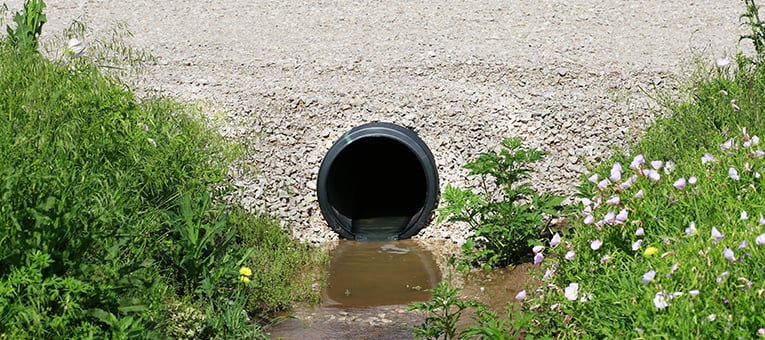Trusted Pad Construction for Your Task Demands
Trusted Pad Construction for Your Task Demands
Blog Article
Culvert Setup Made Easy: Step-by-Step Guide for Success
Installing culverts may feel like a straightforward job, however making certain a successful end result requires cautious preparation and implementation. From picking the proper culvert size to incorporating proper drain actions, each action in the installment procedure plays a critical function in the capability and longevity of the culvert system. By complying with a systematic strategy and taking note of key details, the installation can continue smoothly, decreasing prospective concerns down the line. Stay tuned to reveal the necessary steps and considerations that can make culvert installment a seamless and successful venture.
Selecting the Right Culvert Dimension
Choosing the ideal culvert dimension is vital for making certain efficient water circulation and architectural stability in culvert setup tasks - Pad Construction. The dimension of the culvert directly impacts the circulation capability of water through the structure. A culvert that is also little can cause flooding and overflow, while one that is as well big might cause lowered water velocity, possibly triggering sediment accumulation and blockages
To determine the appropriate culvert size, factors such as the watershed area, top circulation prices, and hydraulic effectiveness need to be carefully considered. Estimations based on these parameters aid in picking a size that can appropriately take care of the predicted water quantity while decreasing the risk of obstructions and structural failing.
It is essential to consult engineering standards and criteria to make sure that the chosen culvert size meets the job needs and neighborhood guidelines (Pad Construction). By selecting the best culvert dimension, task supervisors can maximize water flow, avoid possible concerns, and boost the overall efficiency and durability of the culvert setup
Preparing the Installment Site
Efficient culvert setup requires meticulous preparation of the installation site to make sure optimum architectural assistance and performance. Prior to commencing the installation process, it is crucial to remove the website of any kind of debris, plants, or blockages that can hinder the culvert's placement.
In addition, it is very important to take into consideration variables such as dirt structure, groundwater levels, and ecological effects when preparing the installment site. Conducting a comprehensive website analysis can assist determine any kind of possible challenges or risks that may influence the culvert's efficiency. By putting in the time to prepare the installation site correctly, you can assist guarantee an effective culvert installment that meets structural view it now requirements and guarantees long-lasting performance.
Placing the Culvert Properly

The quality at which the culvert is positioned is essential for preserving an appropriate incline for water circulation. A steady slope helps avoid pooling and promotes effective water drainage. Furthermore, the culvert must be oriented properly to make sure that the inlet and electrical outlet remain in the proper areas. This alignment is essential for the culvert to operate effectively in taking care of water circulation.
Backfilling and Condensing the Dirt
Appropriate backfilling and compaction of the soil around the culvert is important to ensure security and stop prospective issues in the future. As soon as the culvert is properly placed, the following essential step is to backfill the area around it with ideal material. The backfill product must be complimentary from rocks, particles, and raw material to prevent damage to the culvert. It is advised to use granular material such as sand or crushed rock for backfilling, as it supplies good water drainage and compaction buildings.
Compaction aids in reducing the possibilities of settlement and makes certain uniform support around the culvert. It is crucial to portable the dirt evenly on all sides of the culvert to keep its structural integrity.
Appropriate backfilling and compaction not only give security to the culvert yet likewise assist in preventing dirt disintegration and maintaining the longevity of the culvert system.
Guaranteeing Correct Drainage Integration
Integrating effective drainage services plays a critical function in the general performance and durability of culvert setups. Appropriate drainage integration is necessary for taking care you could check here of water circulation, stopping disintegration, and making sure the structural integrity of the culvert system. To achieve this, it is crucial to create an extensive drainage plan that takes into consideration variables such as the quantity of water anticipated, the topography of the location, and the type of soil existing.

Furthermore, incorporating attributes like erosion control steps, such as riprap or plant life, can additionally enhance the performance of the water drainage system. By thoroughly intending and carrying out these water drainage options, culvert installments can work effectively and endure the examination of time.
Conclusion
In verdict, proper culvert setup is essential for keeping effective water drainage Look At This systems. By selecting the best culvert dimension, preparing the installment site, positioning the culvert properly, backfilling and compacting the soil, and ensuring correct drainage integration, success can be achieved. Adhering to these steps will certainly assist make certain the durability and efficiency of the culvert, eventually contributing to the total success of the water drainage system.
Report this page